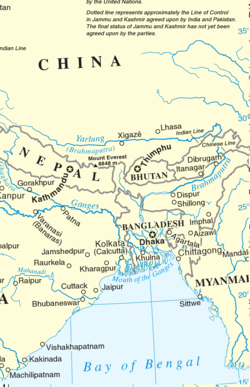It has been suggested that this article be merged into Foreign relations of India . ( Discuss ) Proposed since November 2025. |
This article has multiple issues. Please help improve it or discuss these issues on the talk page . (Learn how and when to remove these messages)
|

Since India's 1947 independence, 98% of Northeast India's borders have been with other Asian countries, making it a strategic frontier region. [1] [2] India's Act East policy seeks to harness this connectivity in the modern day. [3]





